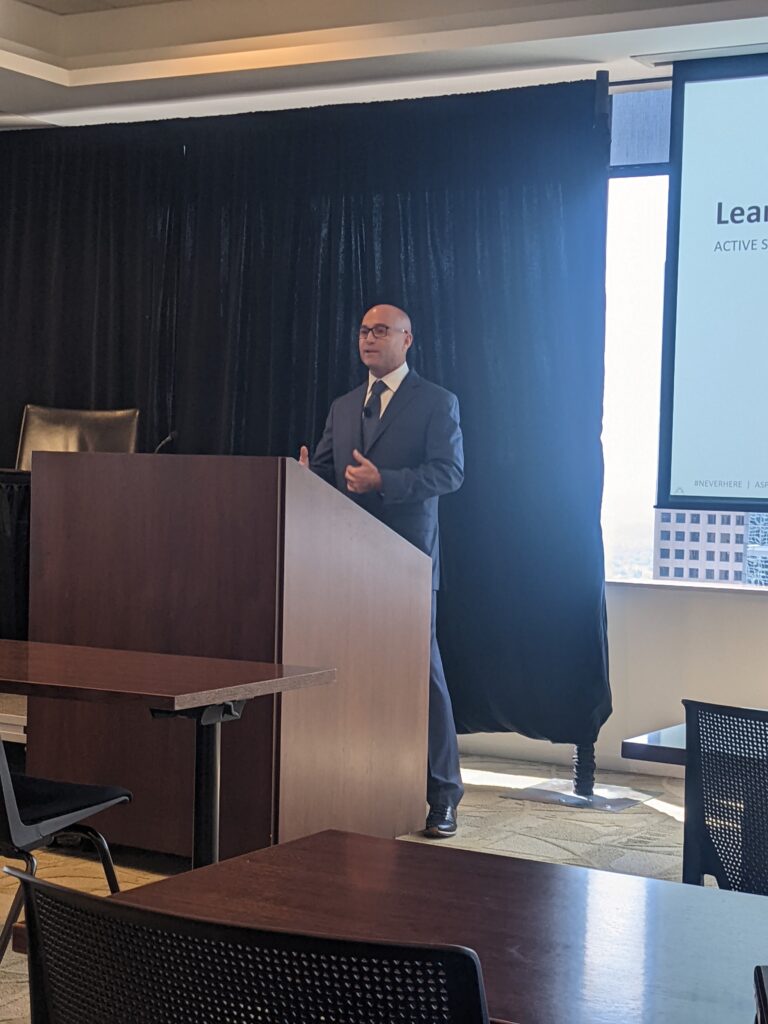The Asymmetric Nature of Evil

We are all worried and angry because of the constant attacks against innocent people. But this problem is made worse by our lack of action, preventing the attacks from happening or reducing the negative impacts if an attack does occur. The Asymmetric Nature of Evil and concern about active shooter attacks have made Americans change their routines by over 50% due to safety concerns.
When we do take action, we often focus only on what happened in the past to help us develop our prevention and response plans. But, we are not thinking about what is called the “asymmetric” nature of Evil. Asymmetric means that threats (wanting to commit violence against us) will always seek out our vulnerabilities rather than attack us where we are strong. Our over-emphasis on reactive planning will only help us with older attack patterns and NOT the adaptive methods that are more likely to take advantage of our weaknesses; when we fail to adapt, we are not as preventative or prepared as we should be. And as a result, more innocent lives are lost.
Leaders must understand both – what has happened (Situational Awareness) and what is likely to happen in the near future (Situational Understanding). Awareness and Understanding are fundamental concepts for future prevention, planning, training, and response. Active Shooters will seek out the weaknesses of their intended targets (people and property). Our vulnerability assessments, preferred solutions, training plans, and community outreach must be able to handle more than what happened over the past 1-2 years or even the past 20 years. We must also “future-proof” our plans based on the asymmetric characteristic of evil people.
Pre-staging a resource officer and trauma care supplies near the classroom wing (mid-morning) on a school day is a good example of using Situational Awareness for both prevention and response. Historical data indicates that the classrooms and nearby hallways have a higher probability of an Active Shooter Event, in the morning, compared to other locations on the school grounds. This is a good first step, but it is a reactive plan.
Remember, Evil will always seek our weaknesses. After all, a killer’s intent is to create mass casualties, sow chaos, and create terror; an attacker does not want to encounter resistance (in the form of physical challenge or detection that provides early warning). We must be prepared for the unexpected by establishing a process that creates greater preparedness.
Situational Understanding will come with time as leaders understand how fundamental problem-solving skills are applied to a comprehensive security plan.
Basic Problem-Solving Skills Comprehensive Security Plan
- Identify the Problem Threat Vulnerability Assessment
- Collect and Analyze Information Threat Assessment Team
- Determine Courses of Action Initial Emergency Action Plan
- Analyze the Courses of Action Tabletop Exercises
- Develop a Plan Revised Emergency Action Plan
- Rehearse/Train on the Plan Training, Liaison & Outreach
- Evaluate Review
These processes will help us find our vulnerabilities.
As an example, we are reading and hearing more about school shootings that fall outside of the traditional “classroom” attacks. More and more gun incidents are occurring in and around outdoor sports complexes. Do our Emergency Action Plans account for an incident that occurs outside during a major event, like a football game? Many security-minded people will have already considered placing additional security in the parking lot after school or during sporting events, but that is hardly understanding, preventing, or preparing for an asymmetric threat. Thinking in terms of asymmetric threats, have we considered the congested nature of sporting events and what that means to choke points (crowded ingress/egress routes) compared to a threat’s use of Improvised Explosive Devices or drones for kamikaze attacks?
The point is that we must be prepared for the threats that we are most likely to encounter, as well as becoming more adaptive toward the threat’s future intentions and capabilities which are more likely to cause a catastrophic event.
This is no longer the realm of the military or a high-end security professional…these are the challenges that all leaders in our communities need to heed and take action upon immediately, or we will continue to read and hear about horrible events where tragedy could have been avoided or mitigated.
Crisis Response Leader Training, Inc is proud to announce that it will be a part of the Active Shooter Prevention Project (ASPP). We will provide our advisory and technical support to clients of ASPP because we believe the assembled team, under the leadership direction of Chris Grollnek, will positively impact our communities and help save lives. For the first time, you are now seeing a blended effort of subject matter experts, leaders, hardware and software solutions, and recommended best practices…all under one team effort! Each organization falling under the ASPP umbrella is unique and highly qualified, and CRLT is excited to be a part of this outstanding alliance.
#NEVERHERE is an achievable goal. You just have to reach out to the right professionals to get started and make a difference. Tod Langley is the CEO of Crisis Response Leader Training (CRLT).

